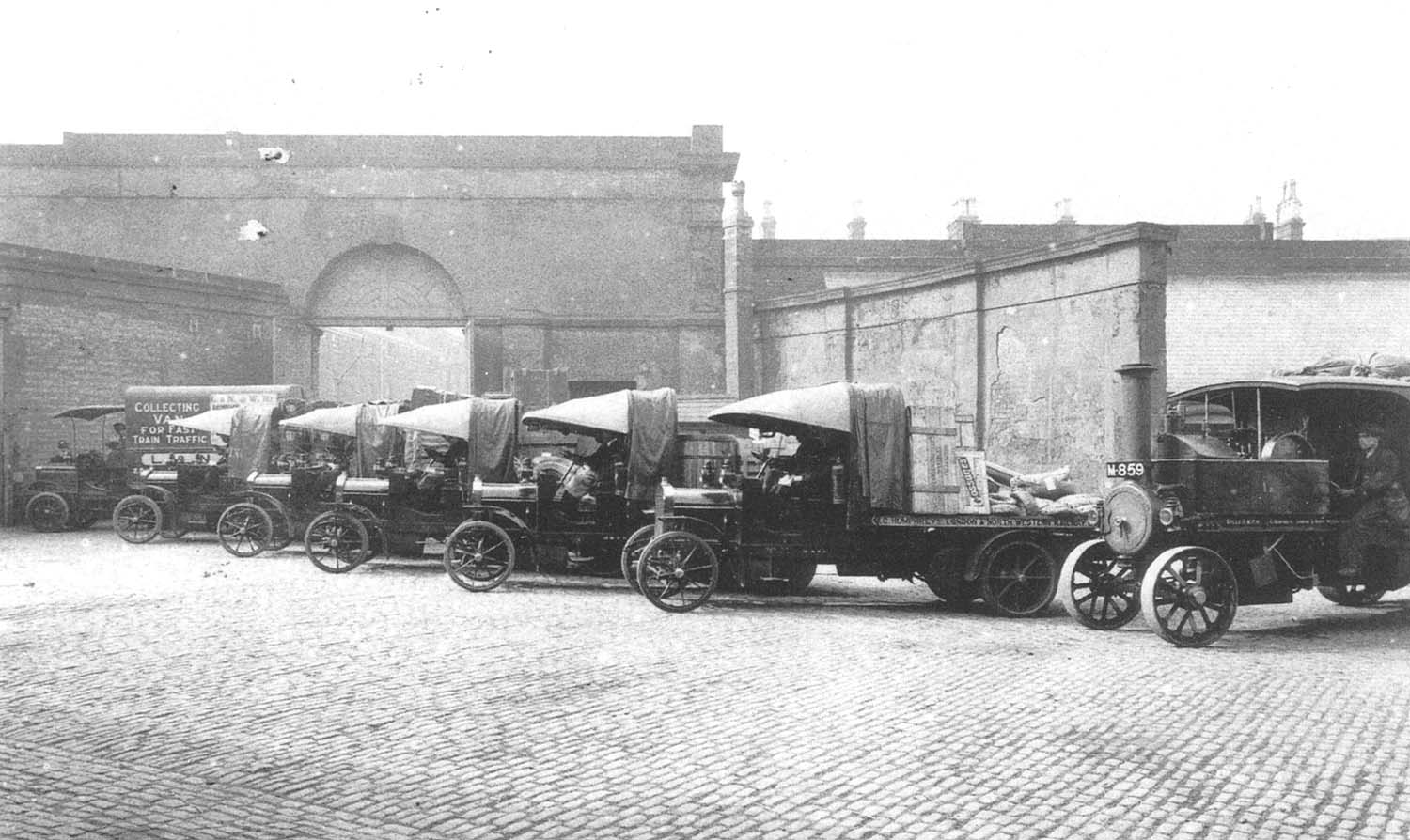|
|
 |
 |
|
London North Western
Railway:

Midland
Railway:

Stratford
Midland Junction Railway
|

|
LMS Route: Rugby to Wolverhampton
LMS Route: Birmingham New Street to Lichfield
LMS Route: Birmingham New Street to Soho and Perry
Barr
Curzon Street Good Station: lnwrcs1497
 |
Curzon Street's motorised road transport fleet displayed for
the photographer in 1912. The LNWR was an early user of motor lorries for
cartage and delivery work with the first experiments being conducted in 1909 in
the Manchester area. Richard Foster states that the first mechanised road
vehicles trialed in the area occurred in May 1910 and tried out in the Perry
Barr and Handsworth parts of the city. The following month the LNWR's Foden
steam lorry was transferred to Curzon Street for trials. The trials were
considered so successful that the first permanent vehicle for Curzon Street was
authorised in November 1910. The first vehicle ordered had a capacity of
2¼ tons and was manufactured by Thorneycroft. In the following April the
LNWR authorised spending £35 on a petrol storage tank and £50 on
raising the garage roof. By 1913 there was a fleet of ten motor lorries to
supplement the work of the horses. The lorries were generally assigned the
routes furthest away from the depot leaving the horses to concentrate upon
deliveries near to Curzon Street. Their chief advantage was speed and range
meaning they could undertake more work in a given time on the longer rounds.
Their haulage capacity was however no greater than horse-drawn transport at
about 1 to 5 tons. Richard writes, 'they allowed some economies in working to
be effected. There was always traffic, known as tranship traffic which
came into Curzon Street as part of loads, but which was destined for another
depot in the area. This had to be sent on, perhaps to Soho, Monument Lane or
Aston. Originally this was done by reloading it into railway tranship vans
which were tripped round to the other depot. However, lorries allowed small
loads to be transhipped by road much more cheaply and quickly than by
rail'.
 back back

|
|
|
